TANZANITE’S 5 Cs
COLOR
The Nzuri Gem staff evaluate Tanzanite’s color grade with three criteria developed by GIA: hue, tone, and saturation.
Hue
Hue is the first impression of a gem’s basic color. Some hues are pure, i.e., green, while others are combinations of hues, i.e., yellowish green. The GIA system designates a colored stone’s secondary hue first and the dominate hue last—and it is capitalized. For example, in a tanzanite that is designated violetish blue, blue is the dominate bodycolor but it has a violet modifier. Tanzanite is a pleochroic gem which means it shows three different colors (red-violet, deep blue, and greenish yellow or brown), when viewed from different angles.
To enhance its color, it is normally heat treated and the greenish yellow color is removed, or substantially reduced, and the bluish color deepens. It is a matter of personal preference but the most desirable hues are pure blue, violetish blue, and bluish violet. These hues are typically found in stones that weigh approximately five carats and above.
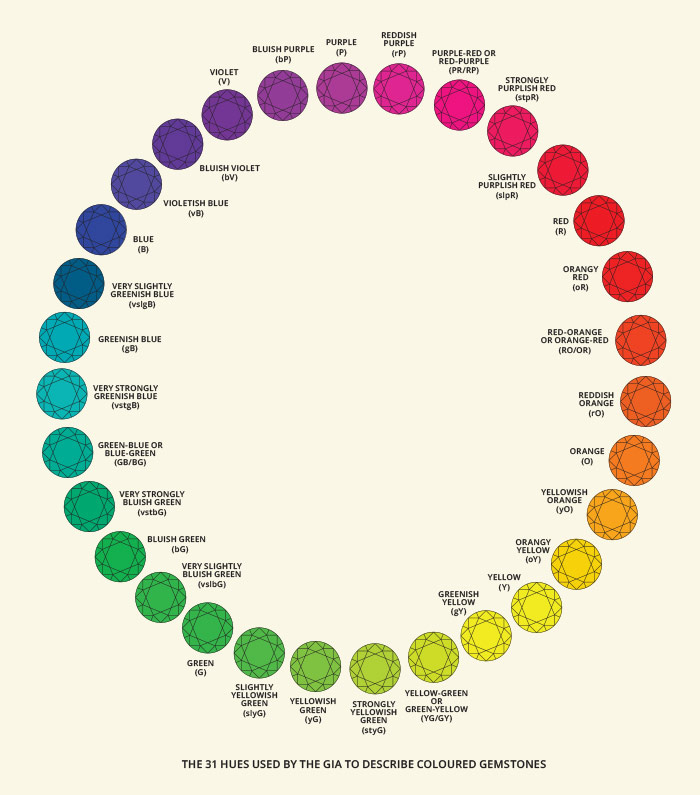
Tone
Tone is the degree of darkness or lightness in a gemstone’s color. Stated differently, tone evaluates light extinction—dark black areas without real color—within a gemstone when it’s viewed through the table. The table is the large, horizontal facet at the top of the gem that acts like a window into it. The easiest way to demonstrate tone is to recall that colorless topaz, colorless quartz, and flawless diamond all have zero tone and zero saturation. Black onyx and black diamonds, on the other end of the spectrum, have very dark tones but no color.
Diving deeper and using amethyst as an example, it is a variety of quartz and if it is clear, it has an extremely light tone. If it has very light tone, we call it rose quartz. If its tone is light, we call it Rose De France Amethyst. With a medium light tone, it becomes a lovely amethyst. At a medium tone, it is the very desirable Uruguayan or Zambian Amethyst. Medium dark quartz is in the territory of Moroccan Amethyst. Moreover, dark quartz is too dark to see its color and beauty, so its value diminishes rapidly.
For colored stones, the eight grades of tone are as follows:
1. Extremely light (hue)
2. Very light (hue)
3. Light (hue)
4. Medium light (hue)
5. Medium (hue)
6. Medium dark (hue)
7. Dark (hue)
8. Very dark (hue)
A well-cut Tanzanite will not have light extinction. The optimal tone for tanzanite is medium light to medium dark.
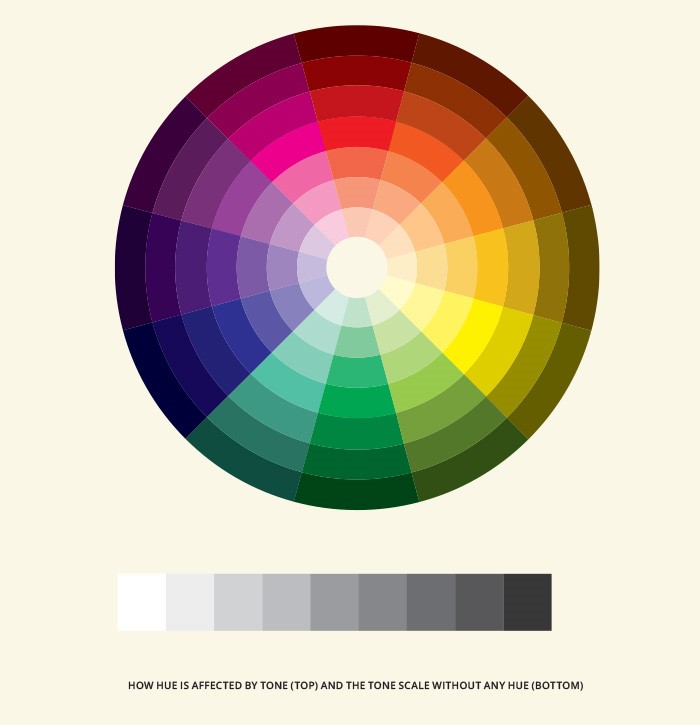
Saturation
Saturation is the strength or intensity of a gemstone’s color. Effectively, it is the strength of a stone’s hue. Lowly saturated gems look dull while highly saturated gems look vivid and intense. Green, blue, and violet gems will look grayish as their saturation decreases, while red, orange and yellow gems with low saturation appear brownish. Saturation of a stone’s hue is often considered the most important factor when grading tanzanite. GIA’s grades of colored stones are as follows:
1. Grayish/Brownish
2. Slightly grayish/brownish
3. Very slightly grayish/brownish
4. Moderately strong
5. Strong
6. Vivid
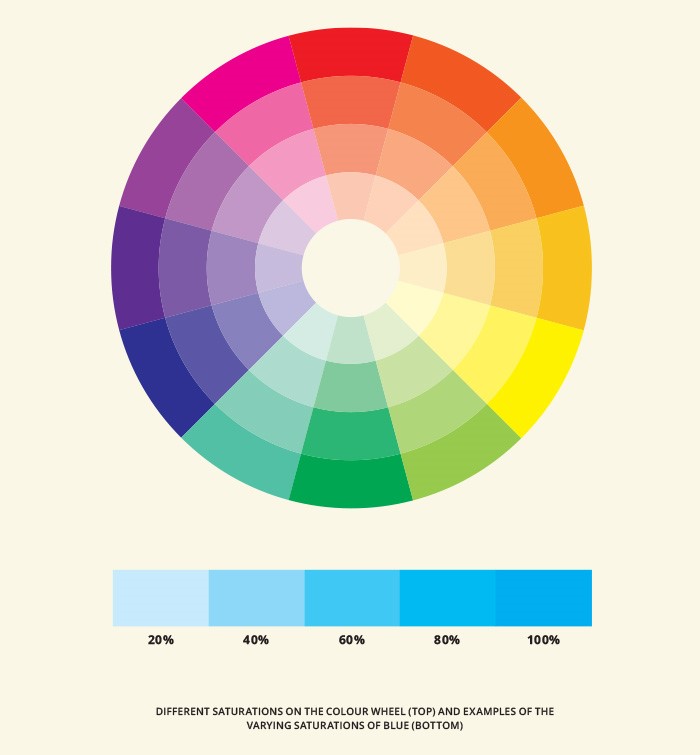
The best tanzanite saturation is vivid. The chart below shows the relationship between tanzanite’s tone and saturation, and the characteristics of grade A through AAA stones.
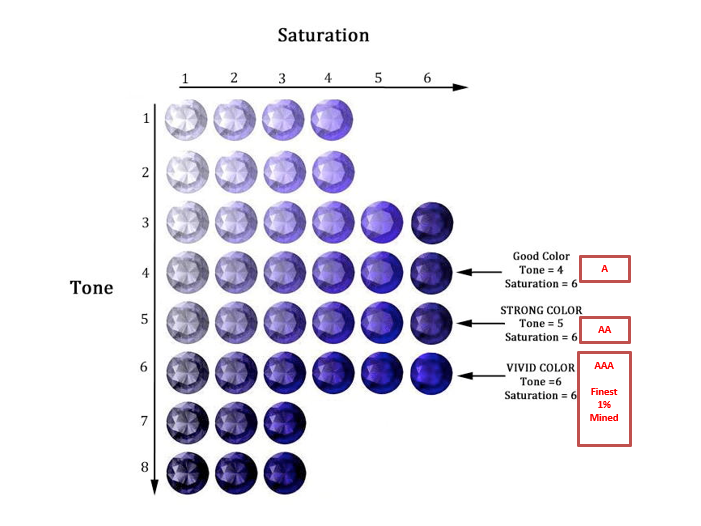
The majority of tanzanite mined is in the 1-3 saturation range, however Nzuri Gems’ staff only acquires tanzanite in the five to six (investment grade) saturation range.
CLARITY
In tanzanite, clarity refers to external blemishes or internal inclusions that help determine its quality. Blemishes are surface irregularities, i.e., scratches and nicks, and they have minimal or no affect on a stone’s appearance, unless they are exceptionally large and numerous. Inclusions can have a drastic impact on a stone’s appearance and value. Due to the way gems form, the chances of a truly inclusion-free gem are rare. Hence, the fewer inclusions a gem possesses, the rarer it is.
The most common inclusions in tanzanite are fluid (small pockets that are filled with fluids and, sometimes, gas bubbles and tiny crystals). They often resemble human fingerprints, when they are closely grouped together, and needles. The other most common inclusions are “feathers,” which are breaks that often appear white and feathery. In recent years, by and large, the gem industry has adopted a tanzanite grading methodology iterated from GIA’s clarity grading system. The categories are:
IF: Internally flawless under 10X magnification
EC: Eye clean
SI: Slightly included
MI: Moderately included
HI: Highly included

Nzuri Gem’s collection is only comprised of internally flawless (IF) tanzanite.
CUT
Cut is a gemstone’s cut and style, or its proportions and finish. An excellent cut tanzanite reflects internal light to create maximum brilliance. The preferred shape of a tanzanite is personal, therefore the quality of the overall cut (proportions) is the largest driver of value.
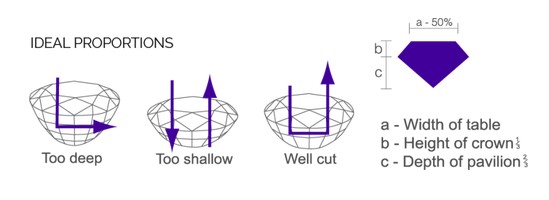
CARAT WEIGHT
Similar to diamonds, carat is the term used to measure a tanzanite’s weight. One carat equals 0.20 gram or 1/5th of a gram. Jewelers who specialize in small stones often cite their stone’s weight in points (pts.). A point is equal to one one-hundredth of (0.01) of a carat, or one carat has 100 points. When planning to pair a Nzuri Gem’s tanzanite with a different type of stone—for a piece of jewelry, it is important to consider each stone’s dimension in millimeters. Every type of stone has a unique density, so two stones with the same weight can have vastly different sizes.

CONFIDENCE
Confidence is always provided to Nzuri Gem’s clients who purchase from our beautiful collection of tanzanite. Their precious heirlooms will be enjoyed for generations, and their sound investments are authenticated with a GIA laboratory report. Moreover, by purchasing from a gem company founded by a Tanzanian—educated at top US institutions (including GIA)—they are assured that Fair Trade was practiced at every step from the mine to their jewelry boxes.
